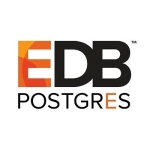What is most valuable?
Monitoring and the ability to quickly drill down, see and identify issues. Also provisionning is an interesting option as long as it works.
How has it helped my organization?
We have set up a lot of alerts which can notify us immediately when something arises and this is keeping our SLA's kept. Additionally we have made customized reports on KPI's in order to quickly get the whole picture and keep management apprised - also so we can show how a change has made an impact.
What needs improvement?
Setting up provisioning can be a challenging. Also there are a lot of bugs and some specific to platforms. Not every platform is equally supported.
For how long have I used the solution?
Personally 6 years, in the company more than that (from version 9 up to 12c)
What was my experience with deployment of the solution?
With the initial deployment no, went smoothly for the last version. In the previous there were some issues that were frustrating but in the end not so hard to overcome.
What do I think about the stability of the solution?
Initially after the upgrade/installation of every version we have had issues with stability and performance. After a couple of weeks tuning and tweaking it stabilizes and then we have no more trouble - till the next upgrade.
What do I think about the scalability of the solution?
No, we have not had any issues. That is probably because at a point we decided to set up a second installation for our test environments and we have divided the workload between the two installations.
Which solution did I use previously and why did I switch?
Before using OEM we had a lot of scripts to check database health, also we have and use some other solutions for monitoring. OEM provided everything in a single package and has a lot more options, plus it is a lot better at monitoring databases then anything else.
How was the initial setup?
With every version it becames easier to set it up. Depending of course on the platform, but still with 12c it is really straight forward.
What about the implementation team?
We tried to involve Oracle for a upgrade and migration project from version 11g to 12c. After more than a year finally they gave up and said it cannot be done. We then did it in-house, workaround it (with their support of course) we migrated the 11g version and then upgraded it. Every other upgrade/installation was done in-house.
What's my experience with pricing, setup cost, and licensing?
Sorry can not say about the cost, we have always used as little hardware as possible.
Which other solutions did I evaluate?
Not a lot. Mainly we looked at what we have and then went for OEM as most of our DBs are Oracle. We have monitoring from HP BAC/Mercury.
What other advice do I have?
It is a must if you have more than a couple of databases to monitor and manage, it can also do a lot of other stuff and monitor various types of targets. It has a good system for testing applications. It has a lot of potentials but best advice is read through the documentation and know what you are getting, check with somebody who is already using it to get the best idea.
Disclosure: I am a real user, and this review is based on my own experience and opinions.










What alternative solutions you have used beside OEM and in which area of customer support you are seeking improvement?